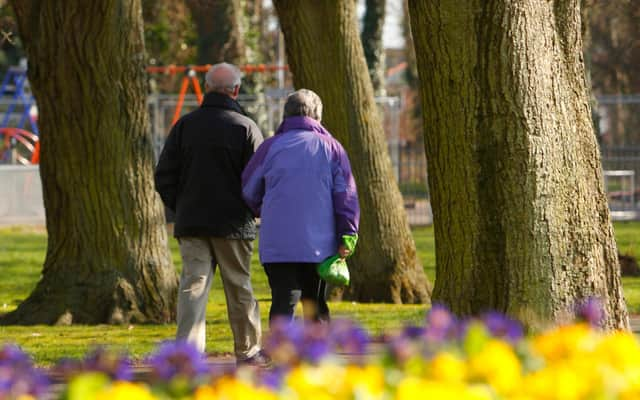Around two miles of green footpaths within walking distance in Horsham


People in Horsham have around two miles of green footpaths within walking distance, new analysis has revealed.
The Ramblers – a charity for walkers – carried out research on the greenness of rights of way across England, using satellite observations of land cover.
Advertisement
Hide AdAdvertisement
Hide AdIt found despite the majority of England being green land, many local areas, particularly urban ones, have significantly fewer green routes.
The charity called on the Government to put a strategy in place to ensure “everyone lives within 15 minutes’ walk of accessible green space”.
The figures revealed 3,296 meters of green public rights of way are accessible to people in Horsham within a 10-minute walk.
This ranks 109th out of 448 constituencies in England.
James MacColl, head of policy, advocacy and campaigns at the Ramblers, said: “The UK Government needs to put in place a strategy, legislation and targets to provide long term focus and momentum in ensuring everyone lives within 15 minutes’ walk of accessible green space.
Advertisement
Hide AdAdvertisement
Hide Ad“We should be working to make our towns and cities some of the best and most liveable in the world by creating green walking routes that allow residents and visitors to experience all the benefits of walking in nature right from their doorstep.”
The Ramblers added tree planting and other initiatives such as pocket parks in urban areas could be very beneficial for people who are underserved by the current walkable network.
Separate figures from environmental organisation Friends of the Earth, show 43% of neighbourhoods in England have less than 10% tree canopy cover, while 84% have less than 20% coverage.
The data uses information from the census to divide the country into over 33,000 neighbourhood areas, each with between 1,000 and 3,000 people living there.
Advertisement
Hide AdAdvertisement
Hide AdThe analysis revealed 28 neighbourhoods in Horsham (44.4%) have less than 10% of tree canopy cover.
Overall, the constituency has just 21.5% of tree cover – equivalent to 7,395 hectares.
The figures also showed a significant gap in tree numbers between the wealthiest and poorest neighbourhoods, with fewer trees in areas with the highest levels of social deprivation.
Mike Childs, head of policy at Friends of the Earth, said: “Green space and tree cover are important for people’s mental health as well as vital for nature.
Advertisement
Hide AdAdvertisement
Hide Ad“Councils need the tools and long-term resources to increase tree cover, green streets and develop new parks. Greening our cities will improve people’s quality of life and provide a home to nature.”
Further Office for National Statistics data shows people in the UK spend less time in nature than they did before the coronavirus pandemic.
It warned around 1.1 million fewer people across the UK gained health benefits from spending time in nature in 2022 compared with two years earlier – equivalent to 22,000 years of life in perfect health lost.
A Department for Environment Food and Rural Affairs spokesperson said:“We are increasing access to nature and our Environmental Improvement Plan set out our ambition for every household to be within a 15-minute walk of a green space or water.
Advertisement
Hide AdAdvertisement
Hide Ad“Just last week we announced an ambitious package of measures for a new National Park, 34 new landscape recovery projects, new forests and funding to help more children get outdoors and into the countryside, making our green spaces more accessible for all communities.
“We are also reducing other barriers preventing people from accessing green and blue spaces, including through our £14.5 million ‘Access for All’ programme.”